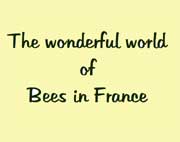Hazel Dormouse
Muscardinus avellanarius
Muscardin
With a body length of just 6–9cm and a tail of similar length, these small dormice are very difficult to find and observe and other than by accidental trapping* we depend on finding their nests or nibbled hazel nuts to record their presence. Artificial nest tubes can also be useful and are increasingly used where they are suspected to be present.
They have reddish brown fur that can vary up to a golden-brown or a yellow-orange-brown becoming lighter underneath BUT they are grey for the first year of their life before taking on their adult colours. Eyes are large and black. Ears are small and not very developed, while the tail is long and completely covered with hair. They weigh a maximum of 40 gm just before hibernation in October - November, but as little as 15 gm following hibernation when they emerge in spring, (April-May).
They are principally a species that lives in deciduous woodland, dense hedgerows and scrub. When active they tend not to come down to the ground other than when using a nest. They have nests that are woven from bark and leaves for resting, (torpor), during periods of cold weather in spring and summer as well as for raising their young. These are often built in tree holes or in dense brambles and hedgerows. With the onset of winter a new nest is constructed for hibernation purposes and this will usually be at ground level and sheltered by dead wood, moss or leaf litter where they can curl up tightly for the long winter sleep.
They have a single litter of four to five young each summer and have a lifespan of about 5 years. Predation, as with the Loir and Lérot, is high risk both in summer when active and during hibernation.
They eat berries, tree seeds, nuts and other fruit with hazelnuts being the main food for fattening up before hibernation. Other food sources are young leaf buds and flowers which provide nectar and pollen. They also eat insects found on the trees they use as a food source, particularly aphids and caterpillars found high in the canopy.
Besides their natural predators, (barn owls and other birds of prey, foxes, boars, marten and so on), that attack them during their hibernation the other threats come from human forestry and land management practices. In fact, the destruction of forest edges and brambles, the tearing up of hedgerows and the replacement of hardwood forests by intensive monoculture of softwoods has led to a massive loss of their required habitat structure.
They are a Fully protected species in France.
*Deliberate trapping is absolutely illegal for this and any other fully protected species in France and punishable by law.



